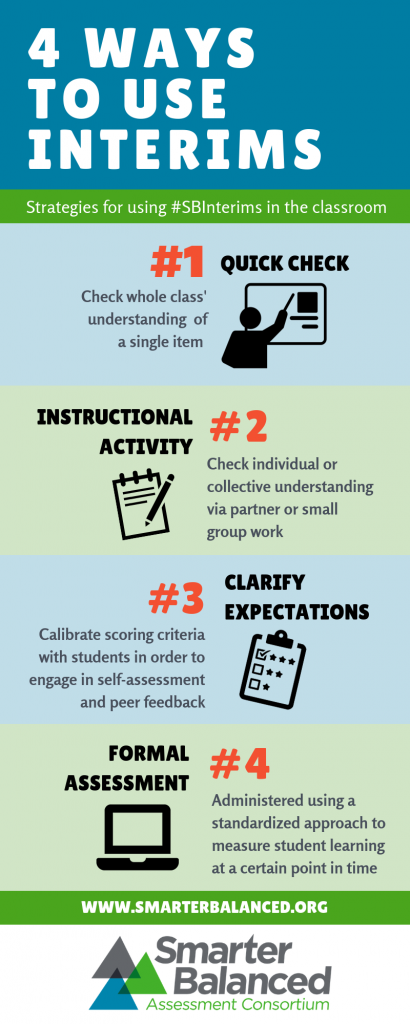4 Ways to Supercharge Learning with IABs

Tips and Tricks for Using Interim Assessment Blocks in the Classroom
Interim Assessment Blocks are quick, flexible tools teachers can use with students as learning opportunities and to collect information about learning. Based on collaboration with, and feedback from, member state educators, here are the top four ways you can use IABs to give learning (and instruction) a boost:
1. Quick Check
Educators can use IABs to quickly check the whole class’s understanding of a concept using a single item. How? The easiest way is to use the viewing system in the assessment portal to project the item on a screen and have students respond on paper, in journals, or on whiteboards.
Formative Tip: Use Entry/Exit tickets to collect, interpret, and act on data using single IAB items.
2. Instructional Activity
Teachers can observe students’ individual or collective understanding of concepts/skills. Students complete the IAB with a partner or in small groups. One goal of using IABs as an instructional activity is to create student discourse and support to advance student learning. If students prefer to work independently, then provide an opportunity for students to discuss items with a partner or in small groups.
Formative Tip: Use Think – Pair – Share, Gradual Release – “We do” to “You do”, or Productive Struggle – “You do” to “We do” type activities to provide opportunities for student discourse.
3. Clarify Expectations with Students
Educators can use IABs as a way to engage students in self-assessment and peer feedback by tasking small groups or the whole class with collaborative exploration of scoring criteria. Using the scoring rubrics with students helps to clarify learning and provide examples of student responses. Once students understand the scoring rubrics, they can apply their knowledge of scoring to their individual responses.
Formative Tip: Use the instructional resource, Using Rubrics to Improve Student Writing, to see this strategy in action.
4. Standardized Administration
This is a means of measuring individual student learning at a given point in time. Delivered via computer, the interim is administered using a standardized approach similar to the end-of-year summative assessment. This approach is best used after a unit of instruction and is particularly powerful when educators include time for instructional adjustments based on student results. Standardization criteria for administration is determined by the educator. For example, students may write down questions for teachers to review with them after the assessment.
Formative Tip: Use the student reports and Connections Playlists to determine instructional next steps.
Super Tip
Use #1 is not generally administered via computer, but Use #2, #3, and #4 provide students an opportunity to log in to the assessment portal and use the built-in accessibility tools, so there may be an added bonus depending on delivery method.
Webinar: Building Bridges One Block at a Time
Bonus! In November, the Smarter Balanced Instructional Supports team hosted a webinar called, “Building Bridges One Block at a Time” that focused on how educators can use the IABs in the classroom. The webinar was hosted by Amy Thierry, Director of Supports for Formative Assessment and included Joe Moran, South Dakota’s Assessment Specialist and Rebecca Bowers, an Education Program Consultant from California. Tune in to learn more from the experts!
